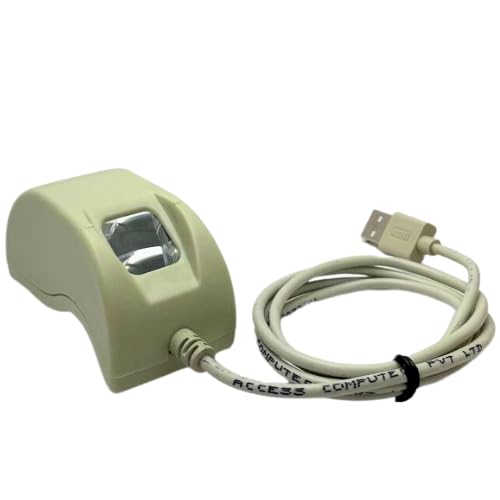Why Should Buy an L1 Biometric Device as a Bank BC for Getting Services
If you are a bank or providing government services such as CSC centers, it is crucial to upgrade your biometric devices for Aadhaar authentication. This upgrade is necessary to comply with the guidelines set by UIDAI (Unique Identification Authority of India). Now, all government services mandate the authentication of Aadhaar using biometric data, specifically L1 Biometric Devices.
In the past, L0 biometric devices were used, but they will no longer be functional from June 2024. Therefore, banks and CSC centers need to invest in and upgrade to L1 biometric devices. These devices offer a higher level of security and accuracy in verifying an individual’s identity through fingerprint, iris, or facial recognition.
By upgrading to L1 biometric devices, you ensure compliance with UIDAI guidelines and provide secure banking and CSC services to fulfill the authentication requirements of Aadhaar. Embracing this upgrade is not only necessary but also beneficial in safeguarding sensitive information and preventing unauthorized access.
You May Love To Read
- Tecno Pova 6 Pro – India’s first 6000mAh battery with 70W Charging Phone Launched
- Will My Alarm Go Off During a Call iPhone? Explained
- Best SEO Kya Hai aur Search Engine Optimization Kaise Kare?
- Exploring the Different Sources of Agricultural Finance in India 2024
- NDTV Big Bonus App Review: Earn Cashback with Ease 2024
What is L1 Biometric Device?
An L1 biometric device is an advanced biometric device to analyzes and authenticates an individual’s unique biometric data, such as fingerprints, iris patterns, or facial features. This technology offers a high level of accuracy and security, making it an ideal choice for various applications, including access control systems, time and attendance management, and identity verification.

What is L0 and L1 Biometric Devices Deference?
Before delving into the details of L1 biometric devices, it’s essential to understand the difference between L0 and L1 devices. L0 biometric devices are basic devices that capture and store raw biometric data without performing any complex analysis.
On the other hand, L1 biometric devices go a step further by using sophisticated AI algorithms to process and analyze the captured biometric data, ensuring a more secure and accurate authentication process.
| Feature | L0 Biometric | L1 Biometric |
|---|---|---|
| Authentication Speed | Slow | Very fast |
| Error Rate | Higher | Lower |
| Data Storage | Local host | Inside software |
| Vulnerability to Fraud | High | Low |
| Security | Less secure | More secure |
| Technology | Basic | Advanced |
| Data Retrieval | Local server | Inside the device |
| Impact on Banking Sector | High risk | Reduced risk |
| Usage | Being phased out | Being introduced |
What is the Functional Difference between L0 and L1 Device?
L0 and L1 devices are used for biometric authentication approved by the UIDAI guidelines, and the currently launched L1 device is considered more secure and user-friendly. One major functional difference between L0 and L1 devices is that L0 encrypts all data on the host machine, while L1 encrypts the data on the device itself, making it more secure.
An RD (Resident Device) service is provided for both L0 and L1 devices, but L1 devices have more advanced features, as they can recognize cloned or artificial fingerprints that have not been generated by humans. L1 devices are registered for one year from the installation date and require annual renewal. They can be used on Windows and Android devices, but not on POS (point of sale) machines.
The L1 device is very user-friendly, and many kiosk banking agents are now happy with the transition to this device as it lessens the likelihood of transaction failures and overall helps them feel more comfortable with banking operations. The L1 RD device is a welcome addition to the AEPS (Aadhaar Enabled Payment System) banking platform.
Why is Bank BC operator Mandated to buy L1 biometric Devices?
It is strongly recommended that all kiosk banking operators purchase L1 biometric fingerprint devices after 01/01/2024, as UIDAI guidelines dictate that the old technology L0 device will not be functional after this date. Honest and diligent operators should welcome the L1 device as it makes fraudulent transactions more difficult, giving greater confidence to customers using the banking service.
In the past, some operators have withdrawn money from bank accounts using artificial fingerprints, which is now prevented by the L1 device’s use, which uses blockchain technology to verify authentic verifications previously done. After 01/01/2024, based on a UIDAI Circular No. HQ-13021/1/2021-Auth-1-HQ, no authentication transaction will be permitted through L0 RD Fingerprint.
You May Love To Read
Best L1 Biometric Devices 2024
L0 Device Not Working, Get An L1 New One From Amazon
 Morpho MSO 1300 E3 RD L1 Fingerprint Biometric Scanner
Morpho MSO 1300 E3 RD L1 Fingerprint Biometric Scanner Mantra MFS110 L1 Fingerprint Scanner Biometric Fingerprint
Mantra MFS110 L1 Fingerprint Scanner Biometric Fingerprint Startek FM220U L1 Single Fingerprint Biometric Thumb Scanner
Startek FM220U L1 Single Fingerprint Biometric Thumb ScannerPlease Note: We are participants in the Amazon Services LLC Associates Program, an affiliate advertising program designed to provide a way for websites to earn advertising revenues by advertising and linking to [Amazon.in]
How do I know if my Morpho is L0 or L1?
If you want to know whether your Morpho device is L0 or L1, you can check the device Label which is located at the bottom side of the device, or in the user manual. You may see “L1” written on the device, or you may find a certificate that says it is L1 compliant. If you are still not sure, you can contact Morpho customer support for assistance. They can provide you with accurate information and help you understand better.
Is L0 Biometric Device Not Work after June 2024?
According to the UIDAI Circular No. HQ-13021/1/2021-Auth-1-HQ dated 27.01.2023, after 30/06/2024, no authentication transactions will be processed through L0 RD Fingerprint Devices. This means that non-L1 biometric devices will not be able to perform fingerprint authentication after this date. It is important to be aware of this change and consider using L1 biometric devices to ensure continued compatibility with authentication processes.
Additionally, consider the specific services you plan to use the biometric device for, such as your bank or Aadhaar Authentication. By keeping up with the latest updates and regulations, you can ensure that you’re using the most suitable technology for your needs and avoid any potential issues in the future.
What is the Cost of Morpho RD Service L1 in India?
The New and Renewal cost of Morpho RD Service L1 in India is Rs. 375.00 for a unit price for one year, plus GST (Goods and Services Tax). This fee enables you to access and utilize the RD (Resident Device) service provided by Morpho for biometric authentication purposes. It is important to note that this cost is subject to change, so it’s a good idea to verify the current pricing from a reliable source.
L1 Biometric Device Driver Download
| Device Name | Version | Driver Download |
| Mantra MFS110 RD Service (Latest) | L1 | Visit Website |
| Mantra MIS100V2 RD Service (Latest) | L1 | Visit Website |
| Morpho RD Service (Latest) | L1 | Visit Website |
| Startek RD Service (Latest) | L1 | Visit Website |
Conclusion:
Upgrading and adopting L0 to L1 biometric devices is a must for banks and government service providers in 2024. The primary reason behind this shift is to comply with UIDAI guidelines for secure Aadhaar authentication using biometric data such as fingerprint, iris, or facial recognition. Adopting L1 devices not only offers enhanced security but also ensures accurate and reliable authentication.
While there may be initial costs, the benefits of upgrading to L1 biometric devices outweigh these expenses in the long run. It is an investment in better security and better service quality, vital for maintaining trust with customers and citizens while safeguarding sensitive data. Therefore, it is vital to follow the directive and switch to L1 biometric devices before June 2024 to improve security and ensure compliance.
























